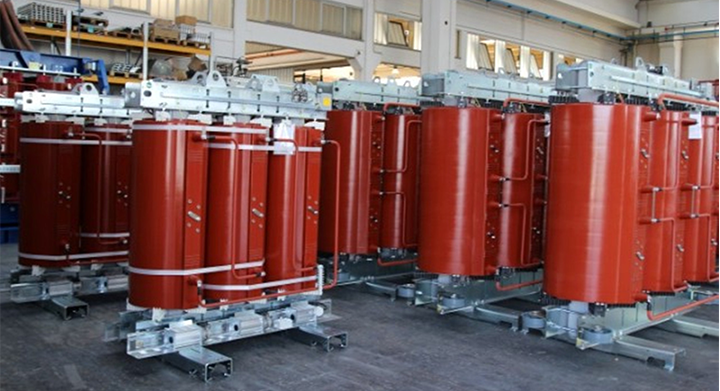
News

1. Zero insulation resistance of the core to ground
When the resistance is zero, it indicates a direct connection between metals (possibly due to burrs, metal wires, etc., carried into the core by the varnish, with both ends touching between the core and the clamp; base insulation damage causing a connection between the core and the base; or a metal object falling into the low-voltage coil, causing a connection between the pull plate and the core). Solution: Use lead wire to probe down the channel between the low-voltage coil and the core, and make sure there is no foreign object. Then check the base insulation. If the problem persists, the following method can be used: Connect the ground lead of a welding machine to the grounding plate, and tap the base with a welding rod (current about 250A); a single tap can solve the problem.
2. Limit switch failure or abnormal operation
The limit switch is a protective device for operators when the transformer is live. If the transformer is energized, the contacts of the limit switch should immediately close when any enclosure door is opened, triggering the alarm circuit and causing an alarm.
3. Common faults when the temperature controller is running
During operation, the temperature controller may fail to trigger an over-temperature alarm (or may not alarm when exceeding the set temperature), or may fail to trip (or may not trip when exceeding the set trip temperature). In such cases, after stopping the transformer, check if the set temperature value of the temperature controller is accurate and if the temperature sensing element is correctly positioned. If not, reset the controller’s settings and reposition the temperature sensor. For other issues, please contact the company's customer service for assistance.
4. Reduced insulation resistance of the core to ground
This phenomenon is generally caused by moisture. As we know, insulation resistance decreases when insulating materials are exposed to moisture. Solution: Place an iodine-tungsten lamp under the low-voltage coil and bake continuously for 12 hours. For the core and high and low voltage coils, if the insulation resistance is low due to moisture, the insulation resistance value will increase accordingly.
5. Discharge noise during power frequency withstand voltage test in acceptance testing
Several possibilities exist: the pull plate discharges at the tightening point of the clamp, which can be resolved by tightening the clamp to ensure good conductivity between the pull plate and the clamp; creepage of the spacer block, especially in high-voltage products (35kV), requires enhanced insulation treatment for the spacer block; improper connection of the high-voltage cable or close proximity to the tap changer and angle connection tube can also cause discharge noise. Increasing the insulation distance and re-tightening the bolts will solve the problem. Check if there is dust or particles on the inner wall of the high-voltage coil, as these may absorb moisture and cause insulation degradation, resulting in discharge.
6. Discharge between the enclosure and ground rail during power-up surge
This indicates poor conductivity between the aluminum alloy panels of the enclosure, suggesting poor grounding. Solution: Use a 2500MΩ megohmmeter to break down the insulation of the panel or scrape off the paint film at each connection point of the enclosure and connect them with copper wire for grounding.
7. Burnt angle connection tube
Carefully inspect the blackened part of the high-voltage coil. Use a knife or iron piece to scrape off the blackest part. If removing the carbon black reveals red paint, it indicates that the insulation inside the coil is not damaged, and the coil is likely in good condition. The transformer ratio test can determine if the coil is short-circuited; if the ratio is normal, the fault is caused by an external short circuit leading to an arc and burning the angle connection tube.
The above are common problems of dry-type transformers.
Contact a Xinghe representative today to learn more about our Transformer.